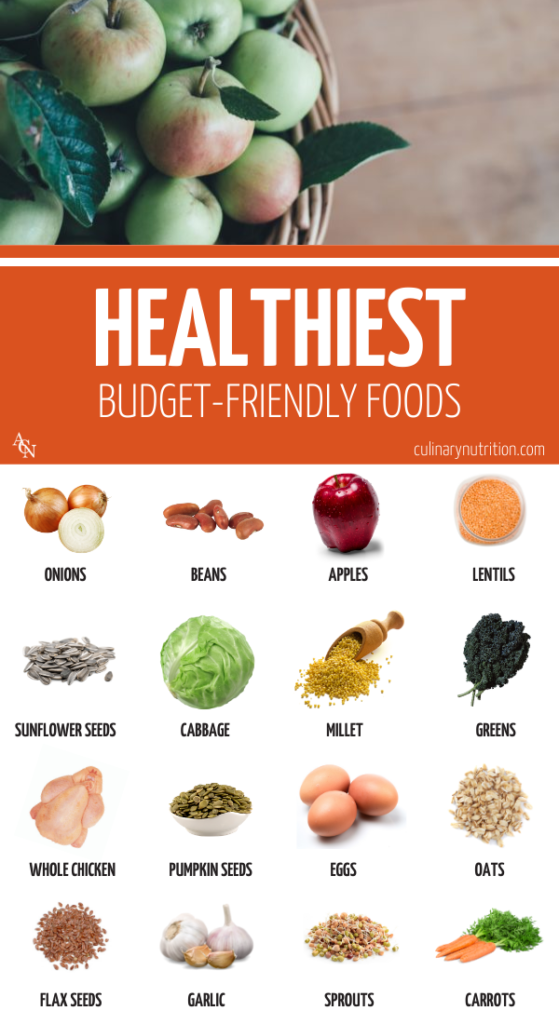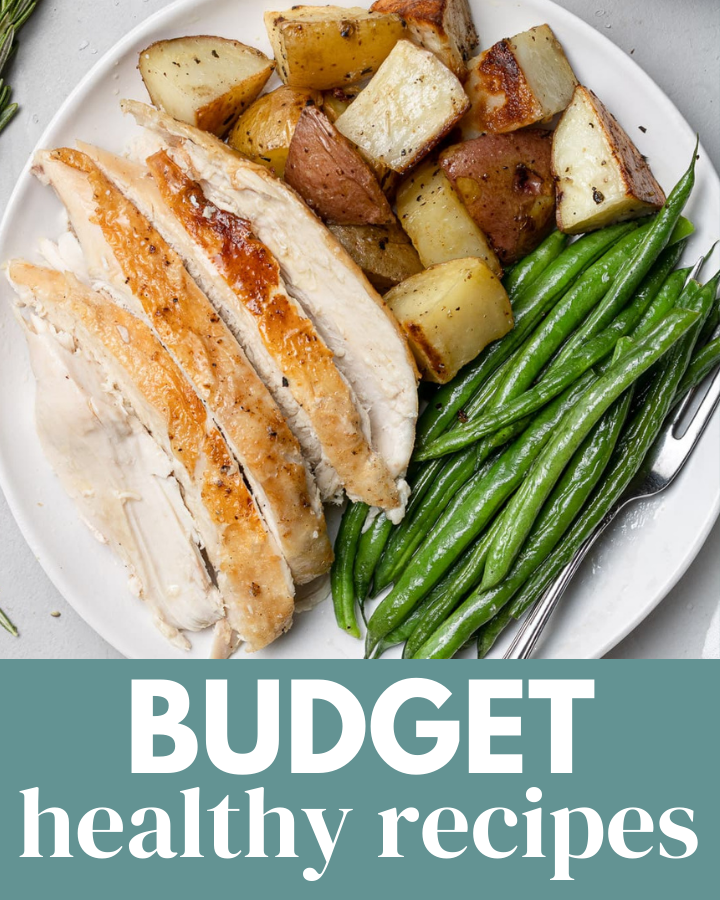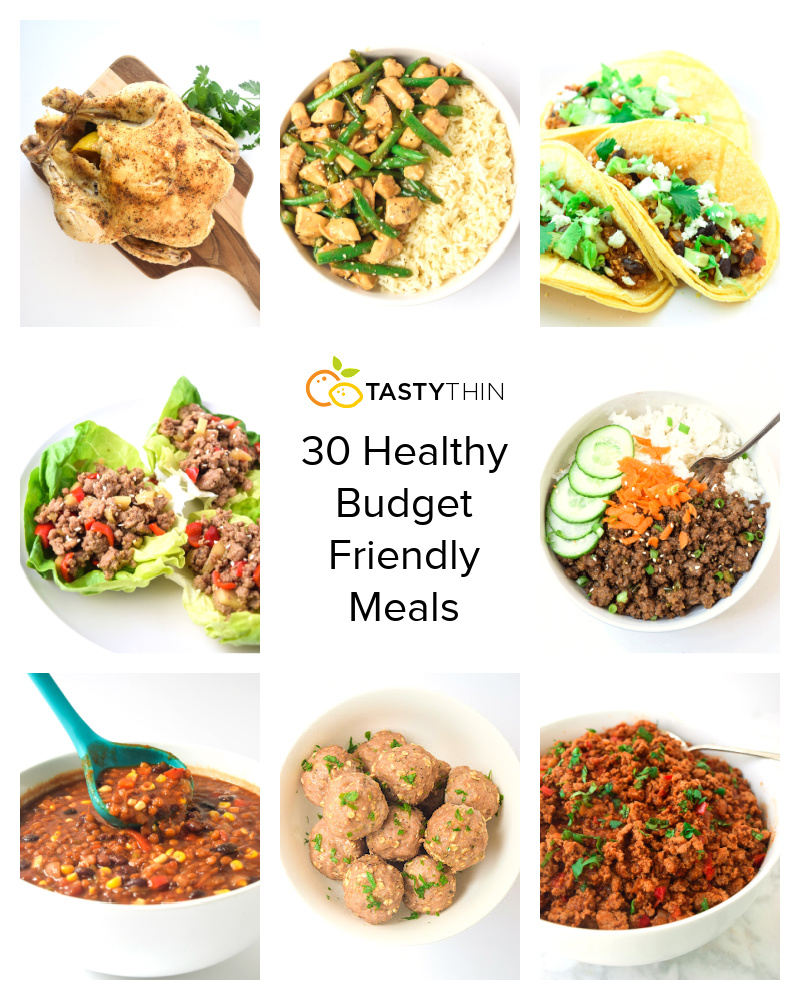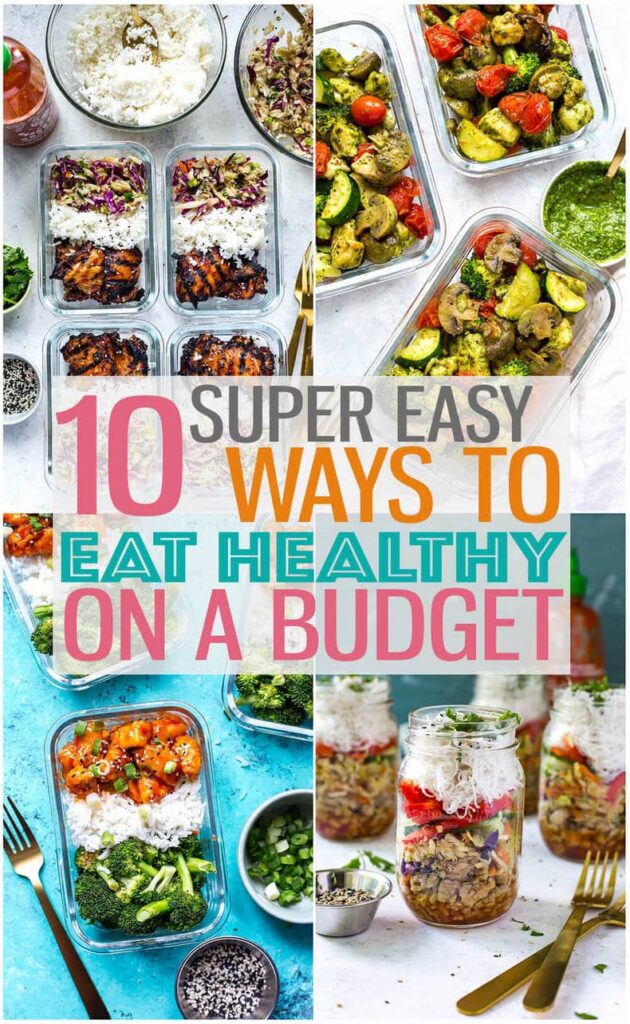Looking to improve your diet without breaking the bank? Look no further! In this article, I will share some fantastic budget-friendly foods that will help you maintain a healthy lifestyle without emptying your wallet. With these wallet-friendly options, you can nourish your body while also saving some serious cash. So, let’s get started on this journey towards a healthier and more affordable diet!

Focus on Whole Foods
Buy fruits and vegetables in season
When it comes to eating healthy on a budget, one of the best tips I can offer is to buy fruits and vegetables that are in season. Not only are they more affordable, but they also tend to be fresher and more flavorful. Seasonal produce is often abundant, which means you can find great deals at your local grocery store or farmers market. From vibrant berries in the summer to hearty winter squashes, there is always a wide variety of delicious and nutritious options to choose from throughout the year.
Opt for whole grains
Another important aspect of a budget-friendly and healthy diet is including whole grains in your meals. Whole grains, such as brown rice, quinoa, and whole wheat bread, are not only more nutritious than their refined counterparts, but they are also typically more affordable. Look for whole grain options when shopping for pasta, cereal, and snacks. You can even try buying grains in bulk to save even more money in the long run.
Choose lean sources of protein
Protein is an essential nutrient that helps to build and repair tissues in our bodies. While meat and fish can be quite expensive, there are plenty of affordable and lean sources of protein that you can incorporate into your diet. Plant-based proteins like beans, lentils, and tofu are not only budget-friendly but also packed with vitamins, minerals, and fiber. Eggs are another great option that can be enjoyed in a variety of ways and add a protein punch to any meal.
Include healthy fats
Contrary to popular belief, fats are an important part of a balanced diet. However, it’s crucial to choose healthy fats that provide essential nutrients and promote overall well-being. Instead of reaching for highly processed and costly oils like vegetable or canola oil, opt for more affordable yet nutritious options. Avocados, nuts, and seeds are all excellent sources of healthy fats that can be part of a budget-friendly and wholesome diet.
Plan Meals in Advance
Create a weekly meal plan
One of the most effective ways to stay on a budget and eat healthily is to plan your meals in advance. By creating a weekly meal plan, you can ensure that you have a clear idea of what you need to buy and prepare for the upcoming week. It also helps to prevent impulse purchases and minimizes food waste. Take some time each week to sit down and plan your meals, considering your budget, dietary preferences, and the ingredients you already have in your pantry.
Make a grocery list based on the plan
Once you have your meal plan ready, it’s time to make a grocery list. Take a careful look at each recipe and note down the ingredients you’ll need. Organize your list by sections (e.g., produce, meat, dairy) to make your shopping trip more efficient. By sticking to your list, you can avoid impulsive purchases and ensure that you’re only buying what you need, saving both money and food.
Stick to the list while shopping
When you walk into the grocery store, it’s easy to get swayed by eye-catching displays and tempting offers. However, sticking to your grocery list is crucial for maintaining a budget-friendly and healthy diet. Remind yourself of the meal plan you created and the ingredients you need to buy. Avoid unnecessary purchases and focus on getting the items on your list. It may take some discipline, but your wallet and your waistline will thank you.
Prepare meals in bulk
Meal prepping is a game-changer when it comes to eating healthy on a budget. By spending a few hours on the weekend or your day off to prepare meals in bulk, you can save time, money, and energy throughout the week. Cook larger portions of your meals and divide them into individual containers. This way, you’ll always have a healthy, homemade option readily available, even on busy days. Plus, buying ingredients in bulk tends to be more cost-effective, further stretching your budget.

Shop Smart
Compare prices
One of the simplest ways to save money on groceries is to compare prices. Take the time to check out different stores in your area to see which one offers the best deals. Don’t forget to compare prices even within the same store, as different brands or package sizes can vary in cost. By being mindful and shopping around, you can ensure that you’re getting the most value for your money.
Shop at local farmers markets
Local farmers markets are not only a great way to support local farmers, but they can also be more affordable than traditional grocery stores. Local produce tends to be fresher and often comes at a lower price due to reduced transportation and handling costs. You may also find unique and seasonal items that are not available in typical stores. Exploring your local farmers market can be a fun and budget-friendly way to shop for fresh and nutritious foods.
Look for sales and discounts
Keep an eye out for sales and discounts in your local stores. Many grocery stores have weekly sales or promotional offers on various products, so take advantage of these deals to stretch your budget further. Be flexible with your meal plan and adapt it based on the items on sale. Additionally, consider signing up for loyalty cards or joining mailing lists to receive exclusive discounts and coupons.
Buy generic or store-brand products
When it comes to saving money, generic or store-brand products are worth considering. Often, these products are similar in quality and taste to their branded counterparts but come at a lower price. Take a closer look at the labels and compare the ingredients and nutrition information to ensure that you’re making a wise and healthy choice. Opting for generic or store-brand products can make a significant difference in your grocery bill without sacrificing quality or flavor.
Cook at Home
Avoid eating out frequently
Eating out can be a real drain on your budget, especially if it becomes a regular habit. While it’s nice to treat yourself to a meal at a restaurant occasionally, making a habit of cooking at home is a budget-friendly choice that also allows you to have control over the ingredients and portion sizes. By preparing your meals at home, you can make healthier choices and save a substantial amount of money.
Cook in large batches and freeze leftovers
Batch cooking is a fantastic way to save time, money, and effort in the kitchen. Whenever possible, cook larger portions of your meals and store the leftovers in the freezer. This way, you’ll always have a home-cooked meal readily available when you’re short on time or don’t feel like cooking. Freezing leftovers not only prevents food waste but also helps you avoid relying on takeout or processed convenience foods when you’re in a pinch.
Utilize leftovers creatively
Leftovers don’t have to be boring! Get creative in the kitchen and find ways to transform yesterday’s meal into a delicious and exciting new dish. For example, leftover grilled chicken can be chopped up and added to a salad, or mashed potatoes can be turned into flavorful potato pancakes. By utilizing leftovers, you reduce food waste and stretch your budget by getting extra mileage out of your meals.
Learn basic cooking techniques
Having some basic cooking skills can go a long way in helping you eat well on a budget. Learn a few essential techniques, such as roasting, sautéing, or stir-frying, to make the most of the ingredients you have. By mastering these methods, you can elevate simple and affordable ingredients into delicious and satisfying meals. There are plenty of online resources, cooking classes, and tutorials available to help you expand your culinary prowess.

Make Use of Affordable Staples
Beans and lentils
Beans and lentils are incredibly versatile, nutritious, and budget-friendly. They are excellent sources of plant-based protein, fiber, vitamins, and minerals. Incorporating beans and lentils into your meals can provide a hearty and satisfying base while adding variety and flavor. From hearty bean stews to nourishing lentil soups, there are endless possibilities to explore with these affordable staples.
Oats and rice
Oats and rice are pantry staples that can be the foundation of many budget-friendly and nutritious meals. Oats are not only a great breakfast option but can also be used to make delicious and wholesome snacks like energy bars or granola. Rice, on the other hand, can be transformed into satisfying main dishes, such as stir-fries or rice bowls, and is an excellent accompaniment to curries or stews. Both oats and rice are affordable, filling, and easily customizable to suit your taste preferences.
Canned tuna or salmon
Canned tuna and salmon are affordable sources of protein that are readily available and have a long shelf life. They are not only convenient but also packed with omega-3 fatty acids and other essential nutrients. Create delicious and budget-friendly meals by adding canned tuna or salmon to salads, sandwiches, or pasta dishes. These versatile ingredients can help you maintain a healthy diet without breaking the bank.
Eggs
Eggs are a nutritional powerhouse and a budget-friendly option, making them a fantastic addition to any meal plan. With their high-quality protein, essential vitamins, and minerals, eggs are a versatile ingredient that can be enjoyed in a variety of ways. Whip up a veggie-filled omelet for breakfast, make a frittata for a quick and easy dinner, or enjoy hard-boiled eggs as a protein-rich snack. Their affordability and versatility make eggs a fantastic choice for anyone looking to eat healthily on a budget.
Frozen fruits and vegetables
Frozen fruits and vegetables are a convenient and budget-friendly alternative to fresh produce. They are picked at the height of ripeness and flash-frozen, preserving their nutritional value and flavor. Stocking up on frozen fruits and vegetables ensures that you always have nutritious options available, even when fresh produce is scarce or expensive. Whether you add frozen berries to smoothies or use a mix of frozen veggies in stir-fries and soups, incorporating frozen produce is an excellent way to stay on track with your healthy eating goals.
Peanut butter
Peanut butter is a budget-friendly and delicious source of healthy fats, protein, and fiber. It can be enjoyed on its own or added to various dishes, such as smoothies, oatmeal, or sandwiches. When purchasing peanut butter, opt for natural varieties without added sugars or hydrogenated oils for the best nutritional value. Peanut butter provides a satisfying and cost-effective option that can be part of a well-balanced and budget-friendly diet.
Buy in Bulk
Purchase pantry staples in bulk
Buying pantry staples in bulk is a fantastic way to save money and stock up on essentials. Items like flour, sugar, pasta, and spices have a long shelf life and are often cheaper when purchased in larger quantities. Keep an eye out for sales or consider shopping at bulk food stores where you can scoop out exactly how much you need. By buying in bulk, you not only save money but also reduce packaging waste, making it an environmentally friendly choice as well.
Consider joining a wholesale club
If you have the storage space and are willing to buy in large quantities, joining a wholesale club can be highly beneficial. These clubs offer discounted prices for bulk purchases, allowing you to save money on a wide range of groceries. However, it’s important to carefully evaluate which items make sense for you to buy in bulk. Non-perishable items, cleaning products, and toiletries often offer the best value, while perishable items should be consumed within a reasonable time frame.
Share bulk purchases with friends or family
Another option to save money while buying in bulk is to split the purchases with friends or family members. If you find a great deal on a bulk item that you know you won’t be able to finish before it expires, consider pooling your resources with others. You can divide the purchases among yourselves, sharing the cost and preventing unnecessary waste. Sharing bulk purchases not only helps you save money but also strengthens relationships and fosters a sense of community.
Divide and store bulk items properly
When buying in bulk, it’s essential to divide and store the items properly to maintain their freshness and quality. Invest in airtight containers or resealable bags to portion out your purchases and keep them protected from moisture, pests, and oxidation. Label each container with the contents and date to track their shelf life. By properly storing your bulk items, you can prevent spoilage, maintain their quality, and make the most of your investment.

Grow Your Own Food
Start a small vegetable garden
Growing your own food is not only a sustainable and fulfilling activity but also a budget-friendly way to enjoy fresh produce. Start by creating a small vegetable garden in your backyard, balcony, or even by utilizing unused spaces indoors. Choose easy-to-grow and low-maintenance vegetables like tomatoes, lettuce, or herbs. With a little time and effort, you’ll be rewarded with a bountiful harvest that can be incorporated into your meals and enjoyed throughout the season.
Grow herbs in pots
Even if you don’t have the space for a full-fledged garden, you can still grow herbs in small pots. Herbs like basil, parsley, and mint are incredibly easy to grow and require minimal care. Place the pots on a sunny windowsill or balcony, and you’ll have a fresh supply of aromatic herbs to enhance the flavors of your dishes. Growing your own herbs not only saves money but also adds a vibrant touch to your meals.
Utilize any available outdoor space
If you’re lucky to have access to any outdoor space, make the most of it by growing your own food. From small backyard plots to community gardens, there are numerous opportunities to cultivate your own fruits, vegetables, and herbs. Consider reaching out to local gardening groups or organizations to find available plots or supportive communities where you can learn and share gardening tips. Utilizing any available outdoor space allows you to become more self-sufficient, connect with nature, and enjoy the benefits of fresh, homegrown produce.
Join a community garden
Community gardens are wonderful initiatives that bring people together and foster a sense of community while promoting sustainable and healthy lifestyles. Joining a community garden gives you access to a shared patch of land where you can grow your own food alongside fellow gardeners. It allows you to share resources, knowledge, and experiences while reducing costs. Community gardens often offer a supportive environment for beginners and provide an excellent opportunity to grow your own food on a budget.
Limit Processed Foods
Reduce consumption of packaged snacks
Processed snacks, such as chips, cookies, and sugary granola bars, not only have a negative impact on our health but also tend to be pricier than homemade alternatives. Make a conscious effort to reduce your consumption of packaged snacks and opt for whole, unprocessed foods instead. Fresh fruit, raw nuts, homemade energy balls, or cut-up vegetables with hummus are all nutritious and budget-friendly choices that can satisfy your snack cravings.
Avoid sugary beverages
Sugar-sweetened beverages not only add empty calories to our diets but can also drain our wallets. Instead of reaching for expensive sodas, fruit juices, or specialty coffee drinks, opt for budget-friendly and hydrating options like water or homemade iced tea. Infusing water with fresh fruits or herbs can add a refreshing twist without added sugars or artificial flavors. Making your own beverages is not only more economical but also allows you to have control over the ingredients and avoid unnecessary added sugars.
Prepare your own sauces and dressings
Pre-made sauces and dressings can be convenient but often come at a higher cost and can contain hidden sugars, unhealthy fats, and additives. Take the time to prepare your own sauces and dressings at home using simple and wholesome ingredients. With a few pantry staples, you can whip up delicious options like tomato sauce, vinaigrettes, or pesto. Homemade sauces and dressings are not only more budget-friendly but also allow you to tailor the flavors and ingredients to your liking.
Read food labels carefully
When purchasing packaged foods, it’s essential to read the labels carefully to make informed choices. Check the ingredient list for unnecessary additives, preservatives, and added sugars. Look for products with shorter ingredient lists and recognizable ingredients. Additionally, pay attention to the serving sizes and nutritional information to ensure that you’re getting the most value and nutritional quality for your money. By being mindful of what you’re buying, you can avoid expensive and unhealthy processed foods and opt for budget-friendly and nourishing options.

Don’t Waste Food
Store perishables properly
Food waste not only impacts our budgets but also has significant environmental consequences. To maximize the lifespan of your perishable items, it’s important to store them properly. Keep fruits and vegetables in the crisper drawer of your refrigerator to maintain their freshness. Store items like bread, cereals, and grains in a cool, dry place to prevent them from going stale. By storing your perishables correctly, you can reduce spoilage and stretch your groceries further.
Repurpose leftovers
Leftovers are a valuable resource that should never go to waste. Get creative with your leftovers and repurpose them into new, exciting dishes. For example, leftover roasted vegetables can be transformed into a delicious soup or added to a salad. Chicken from a previous night’s dinner can be shredded and used in sandwiches or wraps. Experiment with different flavor combinations and techniques to breathe new life into your leftovers and create exciting meals while reducing food waste.
Practice portion control
One of the reasons for food waste is oversized portions that lead to leftovers that often go uneaten. To avoid this, it’s important to practice portion control. Be mindful of the serving sizes recommended on food packaging and adjust your portions accordingly. If you’re preparing meals at home, try to estimate the right amount of food needed for each meal to minimize leftovers. By controlling your portion sizes, you not only reduce food waste but also save money by avoiding excess purchases.
Use vegetable scraps in stocks or soups
Vegetable scraps, such as peels, stalks, and leaves, can be transformed into flavorful and nutritious stocks or soups. Instead of throwing these scraps away, collect them in a container in your freezer. Once you have enough, simmer them with water to create a fragrant and homemade vegetable stock that can be used as a base for soups, stews, or risotto. By utilizing these scraps, you not only minimize food waste but also enhance the taste and nutritional value of your meals.
Stay Hydrated on a Budget
Drink tap water instead of bottled water
When it comes to staying hydrated, tap water is often the most cost-effective and sustainable choice. Investing in a reusable water bottle and filling it with tap water can help you save a substantial amount of money compared to buying bottled water. If you’re concerned about the taste or quality of your tap water, consider using a water filter or opting for an affordable water filtration pitcher. Staying hydrated doesn’t have to be expensive when you have access to safe and clean tap water.
Use refillable water bottles
Disposable water bottles not only contribute to plastic waste but can also be costly in the long run. Instead, opt for refillable water bottles that you can fill up wherever you go. Having a reusable water bottle on hand ensures that you always have access to water, whether you’re at work, running errands, or exercising. It’s a budget-friendly and environmentally conscious choice that promotes healthy hydration without the added expense.
Make your own infused water
Infused water is a flavorful and refreshing alternative to sugary beverages or plain water. Instead of buying expensive flavored waters or artificially sweetened drinks, try making your own infused water at home. Simply add slices of fresh fruits, herbs, or vegetables to a pitcher of water, and let it infuse for a few hours before drinking. Experiment with different combinations like cucumber and mint, lemon and ginger, or strawberry and basil. Infused water is a budget-friendly and tasty way to stay hydrated and add a burst of flavor to your beverages.
Brew your own tea or coffee
If you’re a tea or coffee lover, brewing your own beverages at home is an effective way to save money. Skip the pricey coffee shop visits and invest in quality tea leaves or coffee beans that you can brew yourself. Experiment with different flavors and brewing methods to find your perfect cup. You’ll not only save money but also have the freedom to customize your beverages to your liking and avoid unnecessary added sugars or artificial flavors.
In conclusion, eating healthy on a budget is very much achievable by focusing on whole foods, planning meals in advance, shopping smart, cooking at home, utilizing affordable staples, buying in bulk, growing your own food, limiting processed foods, reducing food waste, and staying hydrated. By incorporating these tips and strategies into your lifestyle, you can nourish your body, mind, and wallet without compromising on taste or nutritional quality. Remember, eating well doesn’t have to be expensive, and with a little creativity and planning, you can enjoy a healthy and budget-friendly diet.


